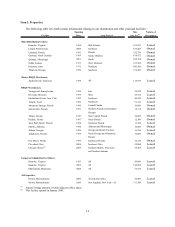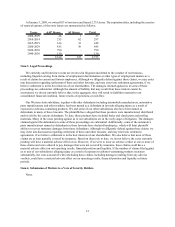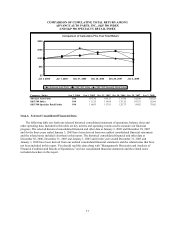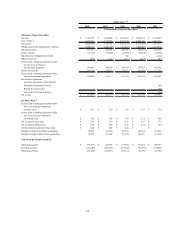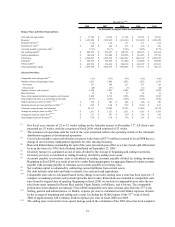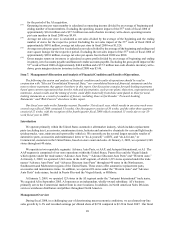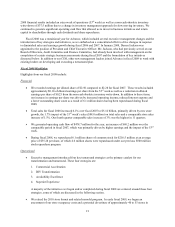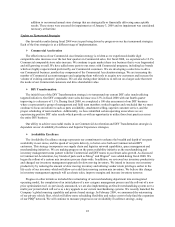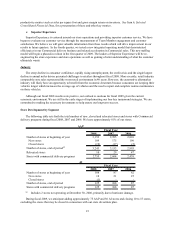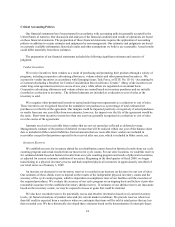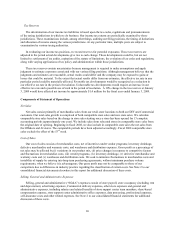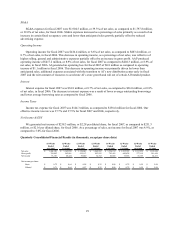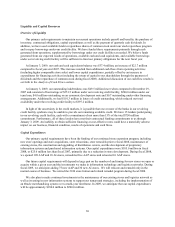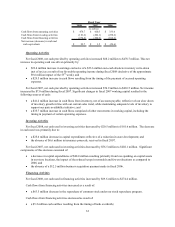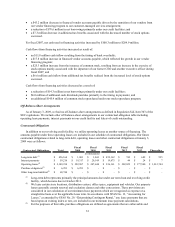Advance Auto Parts 2008 Annual Report Download - page 38
Download and view the complete annual report
Please find page 38 of the 2008 Advance Auto Parts annual report below. You can navigate through the pages in the report by either clicking on the pages listed below, or by using the keyword search tool below to find specific information within the annual report.24
Critical Accounting Policies
Our financial statements have been prepared in accordance with accounting policies generally accepted in the
United States of America. Our discussion and analysis of the financial condition and results of operations are based
on these financial statements. The preparation of these financial statements requires the application of accounting
policies in addition to certain estimates and judgments by our management. Our estimates and judgments are based
on currently available information, historical results and other assumptions we believe are reasonable. Actual results
could differ materially from these estimates.
The preparation of our financial statements included the following significant estimates and exercise of
judgment.
Vendor Incentives
We receive incentives from vendors as a result of purchasing and promoting their products through a variety of
programs, including cooperative advertising allowances, volume rebates and other promotional incentives. We
account for vendor incentives in accordance with Emerging Issues Task Force, or EITF, No. 02-16, “Accounting by
a Customer (Including a Reseller) for Certain Consideration Received from a Vendor.” Many of the incentives are
under long-term agreements (terms in excess of one year), while others are negotiated on an annual basis.
Cooperative advertising allowances and volume rebates are earned based on inventory purchases and are initially
recorded as a reduction to inventory. The deferred amounts are included as a reduction to cost of sales as the
inventory is sold.
We recognize other promotional incentives earned under long-term agreements as a reduction to cost of sales.
These incentives are recognized based on the cumulative net purchases as a percentage of total estimated net
purchases over the life of the agreement. Our margins could be impacted positively or negatively if actual purchases
or results from any one year differ from our estimates; however, the impact over the life of the agreement would be
the same. Short-term incentives (terms less than one year) are generally recognized as a reduction to cost of sales
over the course of the agreements.
Amounts received or receivable from vendors that are not yet earned are reflected as deferred revenue.
Management's estimate of the portion of deferred revenue that will be realized within one year of the balance sheet
date is included in Other current liabilities. Earned amounts that are receivable from vendors are included in
receivables except for that portion expected to be received after one year, which is included in Other assets, net.
Inventory Reserves
We establish reserves for inventory shrink for our distribution centers based on historical results from our cycle
counting program and actual results from our most recent cycle counts. For our store locations, we establish reserves
for estimated shrink based on historical results from our cycle counting program and results of physical inventories,
as adjusted for current economic conditions if necessary. Beginning in the third quarter of fiscal 2008, we began
transitioning to a physical inventory process and had completed physical inventories in approximately one-third of
our retail stores as of January 3, 2009.
An increase (or decrease) to our inventory reserves is recorded as an increase (or decrease) to our cost of sales.
Our estimates of these shrink reserves depend on the results of the independent physical inventory counts and the
accuracy of the cycle count program, which is dependent on compliance rates of our facilities and the execution of
the required procedures. We evaluate the accuracy of our cycle program on an ongoing basis and believe it provides
reasonable assurance for the established inventory shrink reserves. If estimates of our shrink reserves are inaccurate
based on the inventory counts, we may be exposed to losses or gains that could be material.
We also have recorded reserves for potentially excess and obsolete inventories based on (i) current inventory
levels, (ii) historical analysis of product sales and (iii) current market conditions. We provide reserves where less
than full credit is expected from a vendor or where we anticipate that items will be sold at retail prices that are less
than recorded cost. We have historically developed these estimates based on the determination of return privileges


